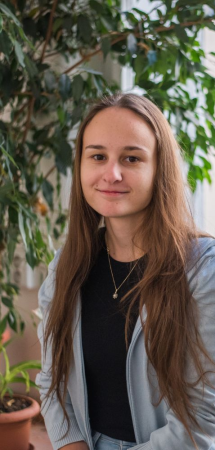
Thesis topic:
Mathematical modelling and process control of microaerobic H2S removal from biogas
Motivation
In the process of anaerobic digestion at wastewater treatment plants (WWTPs), nearly all degradable organic matter is converted into energy-efficient biogas. The resulting biogas is further used in cogeneration units where the energy obtained from it, under certain conditions, can cover all the heat and energy consumption of WWTPs. Therefore, gradually more emphasis is placed on the quality of the resulting biogas, connected to the removal of undesirable by-products of anaerobic fermentation. In sulphate-rich wastewater, a large amount of hydrogen sulphide is produced. Its presence results in technical problems and restrictions on the use of biogas. Hydrogen sulphide is a poisonous gas that inhibits anaerobic processes, causes material corrosion, and is oxidized to sulphur dioxide when biogas is burned. One way of removing it is by microaeration. It is an effective and cheap method - by supplying a small amount of oxygen into the system, the growth of microorganisms that oxidize hydrogen sulphide to elemental sulphur is supported. The state difference of elemental sulphur from biogas allows it to be easily separated. Although this process is already well established in practice, there are still outstanding issues. A proper understanding of microaeration is crucial for designing a control strategy and optimizing this process.
Solution
Within this topic, microaerobic removal of hydrogen sulphide from biogas will be investigated. The study will focus on a detailed description of the process using mathematical modelling with an emphasis on mass transfer and the influence of reactor geometry. The developed model will be validated by laboratory experiments. The output of the work will be the design of an effective management strategy for the microaeration process, and the transfer of the research results to operational conditions is expected.
Education
- 2022 - present: UCT Prague, FET, Department of Water Technology and Environmental Engineering, PhD. Student
- 2019 – 2021: UCT Prague, FCHE, Department of Chemical Engineering, diploma thesis: „Measurement of heat flow in the fire area using plate thermocouples “
- 2016 – 2019: UCT Prague, FCHT, Department of Solid State Chemistry, bachelor thesis: “Development of high throughput cocrystal screening “.
Other area of interest
Participation in teaching
- Basics of Control Engineering (UCT Prague, IMETE)
- Laboratory Course in Water Analysis (UCT Prague)
